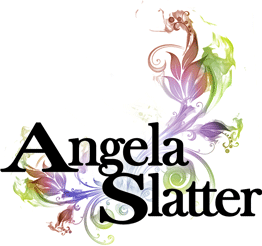
Art by Kathleen Jennings
I wrote this post back in 2010 – remember 2010? When we could travel and didn’t feel the urge to torch-and-pitchfork anyone who coughed near us? Remember airports? Remember complaining about them? Remember how bad the coffee was and how expensive everything was and how surly the workers were? I miss airports so much.
What was my point?
Oh yes.
I am currently (as I apparently don’t have enough on my plate, am a glutton for punishment, and/or this is my equivalent of a hair shirt) reading slush for a friend’s publishing house. And I am seeing THE HORROR they deal with every damned day. So, I give you the key to the kingdom, people, once again. Reduxed with extra crispy rage bits.
The Secret:
There is a secret format that will help get you safely through slush piles, enchant your readers and make you the beloved of editors everywhere. It’s called ‘industry standard’ and it’s not hard to do. Some places still prefer paper over virtual, so paper-related instructions are also included.
Paper: use white A4 paper (A4 for Australia, letter for US, check your country of submission)
Spacing: double line spacing
Font: 12 point font in either Courier or Times New Roman
Print: black ink and only on one side
Margins: should be about 3cm all around
Header: put in Your Name/Title of the Work/Page Number
Secure: by means of bulldog clips or rubber bands – do not attempt to staple or otherwise bind your novel manuscript (short stories, not such a problem)
Send: copies only and not your original manuscript
Not every publisher/journal/magazine/editor will accept this, but the majority will.
How can you establish what individuals want?
Check their websites for submission guidelines. Do your research. Some, particularly online publications, will want things to be a little different: single-spaced in Arial Narrow, but most will accept the industry standard above.
These are not suggestions for you. They are rules to follow.
Why do I continue to harp on this? Firstly, because I am a grumpy old writer and secondly, while consistency may well be the hobgoblin of little minds, you need to remember that formatting is more than just a way of annoying people.
Formatting is signposting.
It says “This way to the story”.
The way words look on a page or a screen directs a reader’s attention. A paragraph indent says “Hi, new ideas here”. A section break says “Time has shifted. You can safely put your book down for the night if you wish.” Formatting indicates pauses, can affect pacing, it can make things easier or harder for someone to read/scan. It can invite a reader in or hold up a big red hand (or indeed, a big finger) to them that says STOP!
If you ignore the conventions and go with something that is single-spaced in Brush Script, in 9 point font, you’re creating the equivalent of contractual fine print. Just as fine print screams “I’m hiding something”, so does incorrect formatting – you’re hiding your story. You’re not encouraging someone to come in, to follow the tale.
And to an editor you’re saying “I don’t know what the rules are and I was too lazy/ignorant/stupid to bother to find out”, or “I am magnificent, special and precious – I will be a lot of work and rules don’t apply to me”.
And here is a big one: check out who the person is you’re sending a story and cover letter to. Are they a Dr, Miss, Ms, Mx, Mr, Professor, etc? What are their preferred pronouns? It’s not that hard to find out – check Twitter, a lot of people let you know there. Check out how they spell their name and be careful to copy that. And here’s the secret final step: make sure you get these things right. Don’t assume that the editor is male – few things cut short your chances of publication than an ill-placed “Dear Sir”. It doesn’t take you long to check these things out. To not do so is to say “I am a dipshit.”
Finally, formatting utilizes the hard-wired cues every reader has embedded in them. The familiar shapes have evolved over many, many years – why mess with them? For more information, you can go to Bill Shunn’s awesome site http://www.shunn.net/format/story.html.

